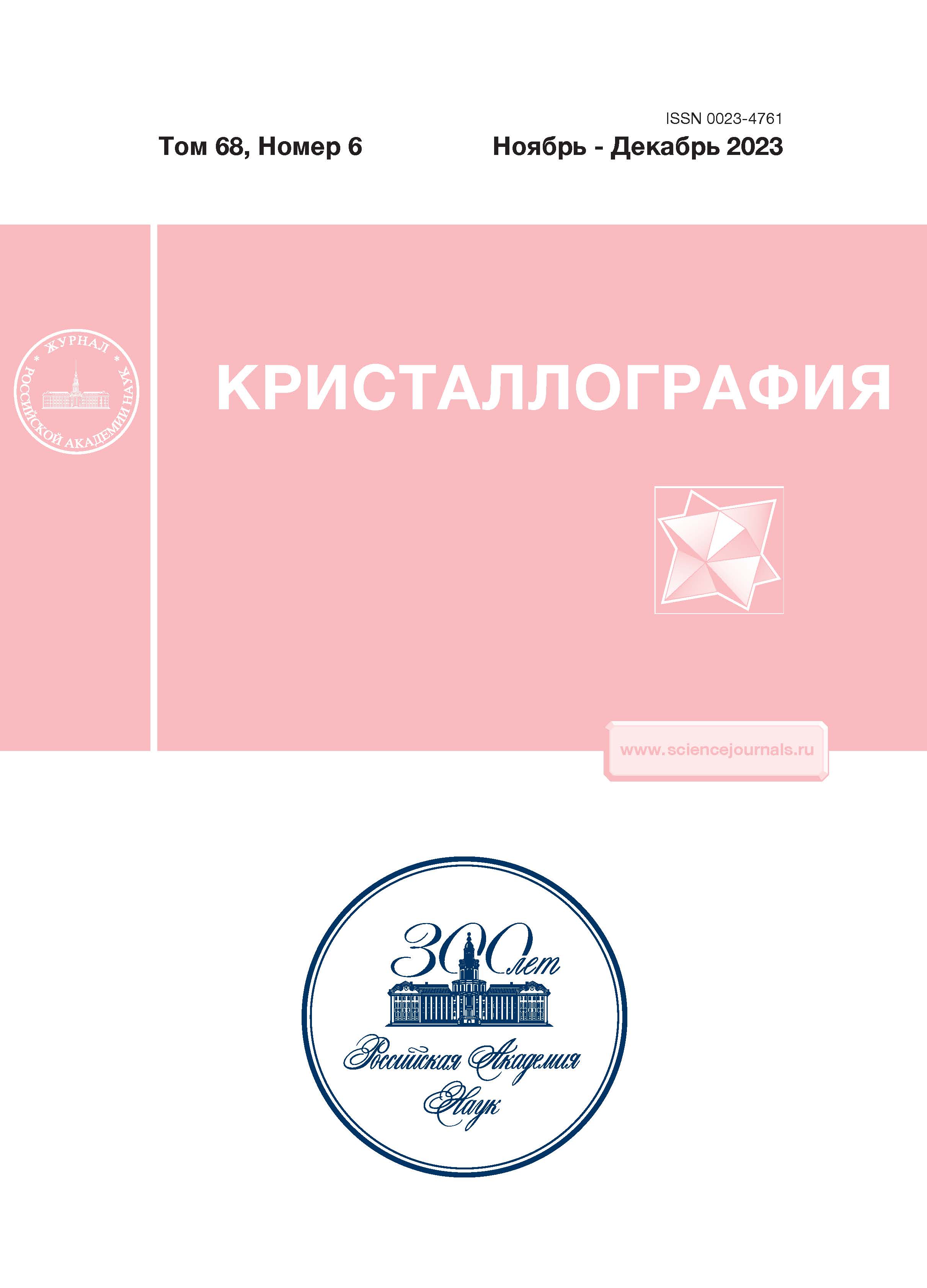Search for New Potential T-Cell and B-Cell Epitopes in the Spike Protein of SARS-CoV-2
- 作者: Kolesnikov I.A.1, Timofeev V.I.1,2, Nikolenko M.V.1, Ermakov A.V.1, Ivanovsky A.S.2, Dyakova Y.A.1, Pisarevsky Y.V.2,1, Kovalchuk M.V.1,2
-
隶属关系:
- National Research Centre “Kurchatov Institute”, 123182, Moscow, Russia
- Shubnikov Institute of Crystallography, Federal Scientific Research Centre “Crystallography and Photonics,” Russian Academy of Sciences, 119333, Moscow, Russia
- 期: 卷 68, 编号 6 (2023)
- 页面: 959-970
- 栏目: КРИСТАЛЛОГРАФИЯ В БИОЛОГИИ И МЕДИЦИНЕ
- URL: https://ter-arkhiv.ru/0023-4761/article/view/673312
- DOI: https://doi.org/10.31857/S0023476123600106
- EDN: https://elibrary.ru/YEZWPQ
- ID: 673312
如何引用文章
详细
The current epidemiological situation, including the existence of new SARS-CoV-2 virus with a high mutagenicity, requires fundamentally new deadlines for the development of vaccines, which may be achieved only applying modern computing technologies and simulation. Epitopes have been found in the spike protein of the SARS-CoV-2 virus using immunoinformatics methods, and their allergenicity and immunogenecity was predicted. It is shown that a vaccine against SARS-CoV-2 can be designed based on these epitopes.
作者简介
I. Kolesnikov
National Research Centre “Kurchatov Institute”, 123182, Moscow, Russia
Email: a.1wanowskiy@gmail.com
Россия, Москва
V. Timofeev
National Research Centre “Kurchatov Institute”, 123182, Moscow, Russia; Shubnikov Institute of Crystallography, Federal Scientific Research Centre “Crystallography and Photonics,” Russian Academy of Sciences, 119333, Moscow, Russia
Email: a.1wanowskiy@gmail.com
Россия, Москва; Россия, Москва
M. Nikolenko
National Research Centre “Kurchatov Institute”, 123182, Moscow, Russia
Email: a.1wanowskiy@gmail.com
Россия, Москва
A. Ermakov
National Research Centre “Kurchatov Institute”, 123182, Moscow, Russia
Email: a.1wanowskiy@gmail.com
Россия, Москва
A. Ivanovsky
Shubnikov Institute of Crystallography, Federal Scientific Research Centre “Crystallography and Photonics,” Russian Academy of Sciences, 119333, Moscow, Russia
Email: a.1wanowskiy@gmail.com
Россия, Москва
Yu. Dyakova
National Research Centre “Kurchatov Institute”, 123182, Moscow, Russia
Email: a.1wanowskiy@gmail.com
Россия, Москва
Yu. Pisarevsky
Shubnikov Institute of Crystallography, Federal Scientific Research Centre “Crystallography and Photonics,” Russian Academy of Sciences, 119333, Moscow, Russia; National Research Centre “Kurchatov Institute”, 123182, Moscow, Russia
Email: a.1wanowskiy@gmail.com
Россия, Москва; Россия, Москва
M. Kovalchuk
National Research Centre “Kurchatov Institute”, 123182, Moscow, Russia; Shubnikov Institute of Crystallography, Federal Scientific Research Centre “Crystallography and Photonics,” Russian Academy of Sciences, 119333, Moscow, Russia
编辑信件的主要联系方式.
Email: a.1wanowskiy@gmail.com
Россия, Москва; Россия, Москва
参考
- Coronaviridae Study Group of the International Committee on Taxonomy of Viruses // Nat Microbiol. 2020. V. 5 (4). P. 536. https://doi.org/10.1038/s41564-020-0695-z
- Beeching N.J., Fletcher T.E., Flower R. // BMJ Best Practice Coronavirus Disease (COVID-19).
- Heymann D.L., Shido N. // Lancet. 2020. V. 395 (10224). P. 542. https://doi.org/10.1016/S0140-6736(20)30374-3
- Clinical management of severe acute respiratory infection when novel coronavirus (2019-nCoV) infection is suspected: interim guidance, WHO, 2020, 28 January.
- Araf Y., Moin A.T., Timofeev V.I. et al. // Front. Immunol. 2022. V. 13. 863234. https://doi.org/10.3389/fimmu.2022.863234
- Abass O.A., Timofeev V.I., Sarkar B. et al. // J. Biomolecular Structure and Dynamics. 2021. V. 40 (16). P. 7283. https://doi.org/10.1080/07391102.2021.1896387
- Quarleri J., Galvan V., Delpino M.V. // GeroScience. 2022. V. 44 (1). P. 53. https://doi.org/10.1007/s11357-021-00500-4
- Gowrisankar A., Priyanka T.M., Banerjee S. // Eur. Phys. J. Plus. 2022. V. 137. P. 100. https://doi.org/10.1140/epjp/s13360-021-02321-y
- Yao L., Zhu K. L., Jiang X. L. et al. // Lancet. Infectious Diseases. 2022. V. 22. № 8. P. 1116. https://doi.org/10.1016/S1473-3099(22)00410-8
- Cao Y., Yisimayi A., Jian F. et al. // Nature. 2022. V. 608 (7923). P. 593. https://doi.org/10.1038/s41586-022-04980-y
- Gallagher T.M., Buchmeier M.J. // Virology. 2001. V. 279. № 2. P. 371.
- Larsen M.V., Lundegaard C., Lamberth K. et al. // BMC Bioinformatics. 2007. V. 8. 424. https://doi.org/10.1186/1471-2105-8-424
- Buus S., Lauemoller S.L., Worning P. et al. // Tissue Antigens. 2003. V. 62. № 5. P. 378.
- Potocnakova L., Bhide M., Pulzova L.B. // J. Immunol. Res. 2016. 6760830. https://doi.org/10.1155/2016/6760830
- Ponomarenko J., Bui H.H., Li W. et al. // BMC Bioinformatics. 2008. V. 9. 514. https://doi.org/10.1186/1471-2105-9-514
- Dimitrov I., Bangov I., Flower D.R., Doytchinova I. // J. Mol. Model. 2014. V. 20. 2278. https://doi.org/10.1007/s00894-014-2278-5
- Gupta S., Kapoor P., Chaudhary K. et al. // PLoS ONE. 2013 V. 8 (9). № 73957. https://doi.org/10.1371/journal.pone.0073957
- Doytchinova I.A., Flower D.R. // BMC Bioinformatics. 2007. V. 8 (4). https://doi.org/10.1186/1471-2105-8-4
- Kudriavtsev A.V., Vakhrusheva A.V., Novoseletsky V.N. et al. // Viruses. 2022. V. 14 (8). 1603. https://doi.org/10.3390/v14081603
- Hallgren J., Konstantinos D.T., Pedersen M.D. et al. // bioRxiv. 2022. https://doi.org/10.1101/2022.04.08.487609
- Sharma N., Naorem L.D., Jain S., Raghava G.P.S. // Briefings in bioinformatics. 2022. V. 23. № 5. 174. https://doi.org/10.1093/bib/bbac174
补充文件














